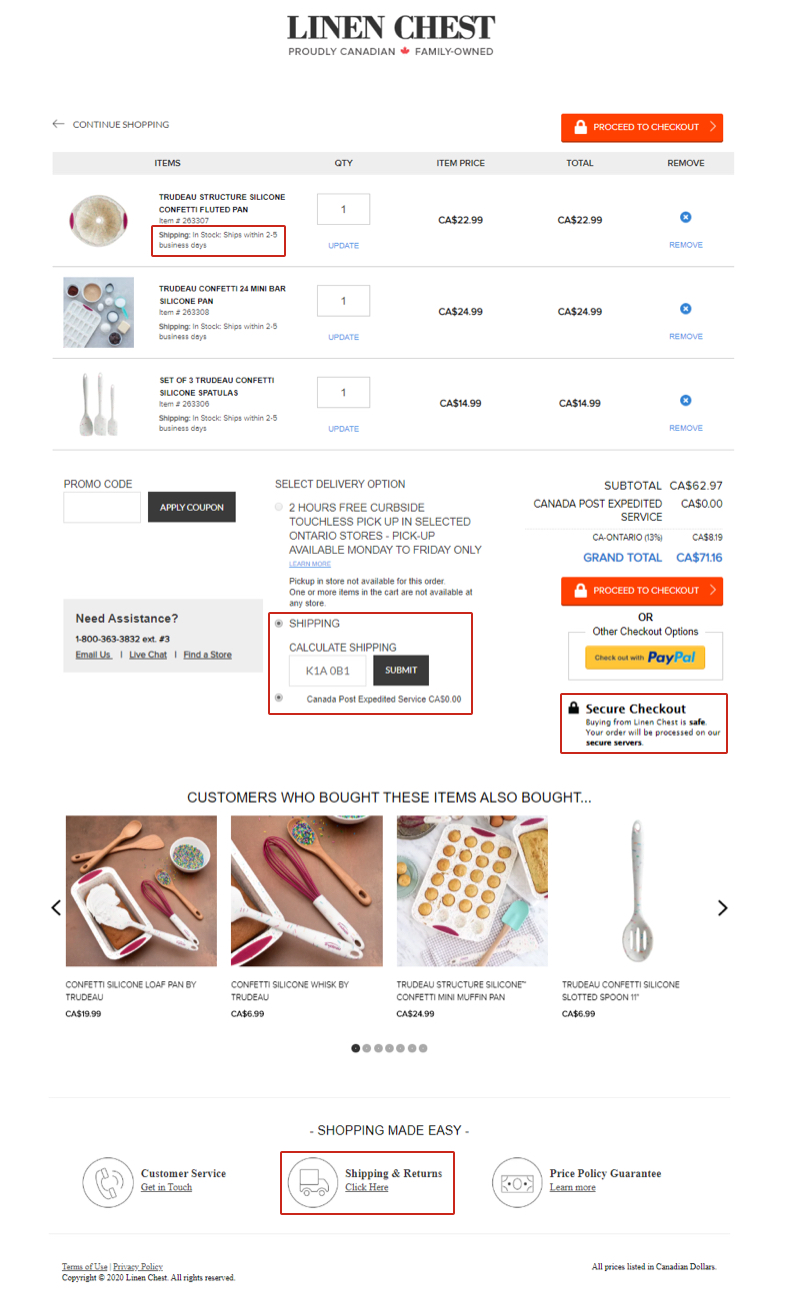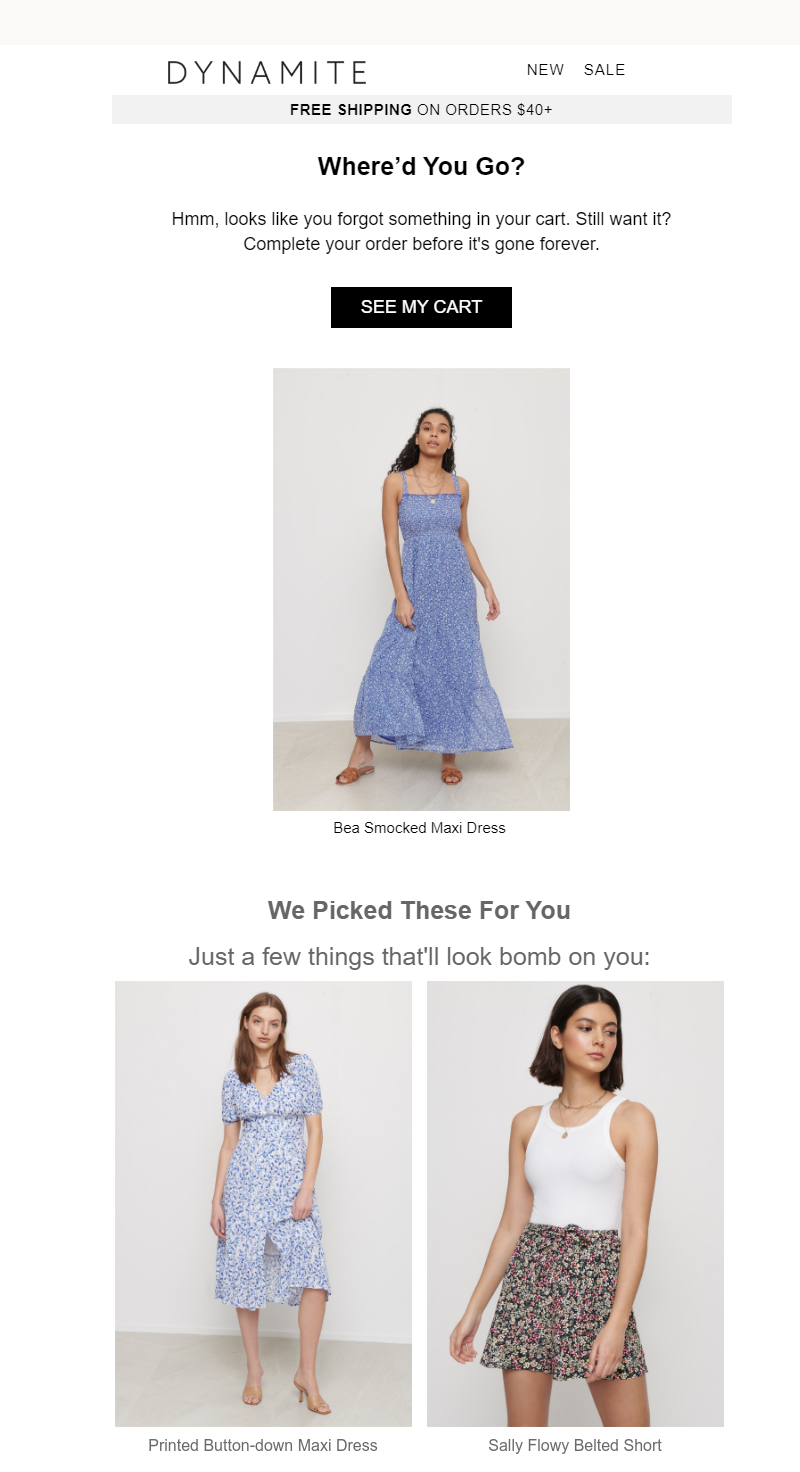Your business is unique and its needs are evolving, fast.
As consumers across the country are now required to stay home, spending behaviours have shifted. According to this study, 85 per cent of Canadian consumers have reported that their shopping behaviour has been impacted by COVID-19. Online retailers are feeling those changes and are now scrambling to deliver necessities to Canadians.
There is a lot of financial strain on many businesses right now, making it even harder to navigate the competitive landscape. Building on our previous blog post, “Key strategies for e-commerce retailers navigating Coronavirus,” consider the following tips and best practices, which are designed to help your business stand out in the current e-commerce landscape.
Be discoverable across all channels to reach online shoppers
With so many potential points of contact with consumers, it’s important to optimize every channel possible to promote your business. An integrated, carefully sequenced and balanced mix of channels is the most effective way to reach and engage audiences. Here are some tips to help your business become more discoverable:
Optimize your searchability
When shoppers look for products like yours, you want to be visible at the top of the list. 58 per cent of online shoppers discover new online retailers when searching for specific items – particularly on Google or Amazon.1 To do this, you’ll need to:
Improve your website’s functionality
Your website or online sales platform needs to work well to perform well. Take some time to:
- Fix broken links.
- Stay on top of search changes and adjust your content accordingly.
- Target the right keywords – especially long-tail keywords. Avoid using generic keywords and opt for more specific alternatives in order to rank better and attract higher-quality leads.
- Work with your technology partner to improve your SEO. Some platforms enable you to edit your product titles, descriptions, etc.
- Stay relevant in online marketplaces like Amazon. The keywords you use in your product listings should be relevant to the actual products, so that Amazon pushes them to the top of search results.
Share content regularly on social platforms
32 per cent of online shoppers discover new online retailers on social media.2 During this time, be sure to:
- Engage meaningfully with your customers and audience on social to connect with them and stay top of mind.
- Weave emotion into your product messaging rather than solely focusing on your products themselves.
- Inspire your community. This is an opportunity to put smiles on their faces.
Explore additional marketing channels
There are so many ways to reach new customers. Be open to new-to-you marketing channels and go in knowing who you’re looking for.
- Collect and analyze first-party data. If you’re selling through your website, you can collect and analyze first-party data to better understand shopper activity for your customers. You’ll get to know who they are, where they live and how to contact them.
- Leverage that data through direct mail to generate look-alike customers for your business. An integrated, carefully sequenced and balanced marketing mix is the most effective way to reach that audience.
Improve your checkout experience to avoid cart abandonment
Ensure your business offers a best-in-class online checkout experience that meets shoppers’ expectations. This is crucial to avoiding cart abandonment and converting more browsers into buyers.
Offer free shipping
Free shipping is one of the top influences for customers when it comes to choosing a retailer. In fact, 86 per cent of online shoppers said they will shop more often with retailers that offer free shipping.3 Now is the time to offer it, as customers are shopping online more than ever while being on a budget.
- Offer free shipping to bolster sales and remove barriers to purchase.
- Lower the minimum purchase threshold to qualify for free shipping in order to encourage more buying.
- Offer free shipping on certain items and product collections that are most likely to appeal to your customers during these extraordinary times.
Get the latest information on delivery interruptions that may affect your neighbourhood and international shipments.
View service alertsSet realistic expectations and keep customers informed about their delivery
Customers appreciate being well informed. Do what you can to keep them in the loop about their delivery.
- Communicate estimated delivery wait times and outline any shipping delays.
- Provide key shipping information upfront, prior to checkout. A lack of delivery details could provoke customers to abandon their cart and buy from other retailers.
- Identify your delivery company. The delivery experience is just as important as the shopping experience. It can lead to repeat business. 22 per cent of online shoppers will abandon their cart or avoid future purchases with a retailer if their delivery company is not identified.4
- Outline shipping and returns policies clearly to encourage higher conversion.
- Display your returns policy on your landing page and at the point of purchase if you offer free returns. This will help drive conversions.

Clarity is key. Linen Chest displays valuable information their customers want before purchase. Customers can see stock availability, shipping time estimates, Linen Chest’s free shipping threshold, the shipping carrier, and that the store’s checkout system is secure. Customers can also review the store’s easy returns policy before they buy.
Re-engage shoppers who have abandoned their online carts
Abandoning their cart doesn’t mean they’re gone for good. Here are some strategies that you can employ to try to save the sale:
- Inspire some FOMO (fear of missing out). Remind customers that they might not be able to get that product again. Let them know if a product is limited edition or if your stock is low. Mention the possibility of the product selling out. Try testing messaging like, “complete your order before we sell out” or “you can still take X home – but not for long.”
- Refresh their memory. Use eye-catching visuals of the products they left behind to remind the shoppers about what they were shopping for. This helps customers recall your brand, as well.
- Provide discounts and offers. Offering a discount can provide the gentle push a shopper needs to complete their purchase. Item cost may have been a key factor in why they abandoned their cart. Some retailers offer perks like free shipping, $5 off or a percentage discount. Explore what might work best for your margins and what is manageable for your business.
- Include a strong and clear call-to-action. Test different messaging to see what resonates best with your customers. “Return to your cart”; “keep browsing”; “complete your purchase” etc.

Dynamite reminds customers about their abandoned carts with a provocative and well-timed email. The email shows potential customers what they abandoned, letting them know time’s running out to buy it. It also sneaks in more items the customer may like and a call to action to return to their cart and buy the items, while they still can.
Do what you can to minimize errors
Order errors happen – especially when you are experiencing an influx of orders and are scrambling to keep up with demand. Take advantage of tools designed to prevent costly errors due to increased orders.
Canada Post’s AddressCompleteTM eliminates the capture of incorrect addresses right at the point of capture. This reduces the need to clean the address collected once it’s in your database, and helps you avoid costly missed deliveries.
Count on us for support
We’re here to support you and your business as you adapt.
Learn more about the steps Canada Post is taking to keep deliveries and our employees safe.
Sources:
1 2 3 4 Canada Post. 2019 Canadian Online Shopper Study, CPC 19-201, April 2019.
Get expert e-commerce help.
Whether you’re just starting or optimizing as you grow, Canada Post’s e-commerce experts can help.
Contact an expert